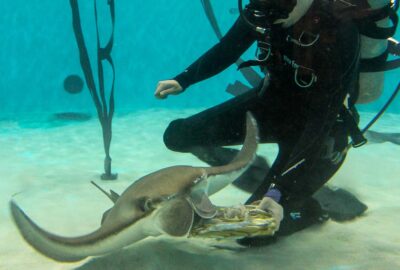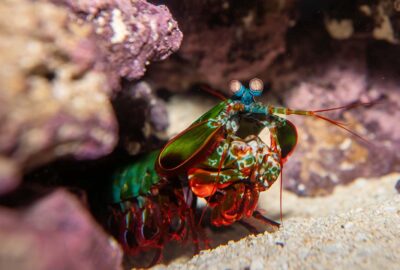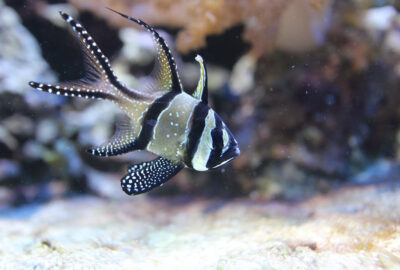Please Note: Our Box Office is currently closed for renovation. Tickets can be purchased onsite in the Simons Theatre lobby today. We recommend purchasing tickets online in advance to guarantee and expedite your entry to the Aquarium.
Can You Spot the “Shrimposters?”
For National Shrimp Day, learn what makes a shrimp a shrimp, and discover a few “shrimposters” that you can see around the Aquarium!
By New England Aquarium on Friday, May 09, 2025

What makes a shrimp a shrimp? As it turns out, it’s not so simple (or shrimp-le?). “Shrimp” isn’t a strictly scientific name—so many marine crustaceans are commonly called “shrimp” even if they aren’t “true” shrimp, or Caridea, which includes pistol shrimp and cleaner shrimp.
Confused? Well, don’t worry. No one would fault you for wishing any of the animals below a happy National Shrimp Day on May 10.
See where you can spot these “shrimposters” during a visit to the Aquarium!
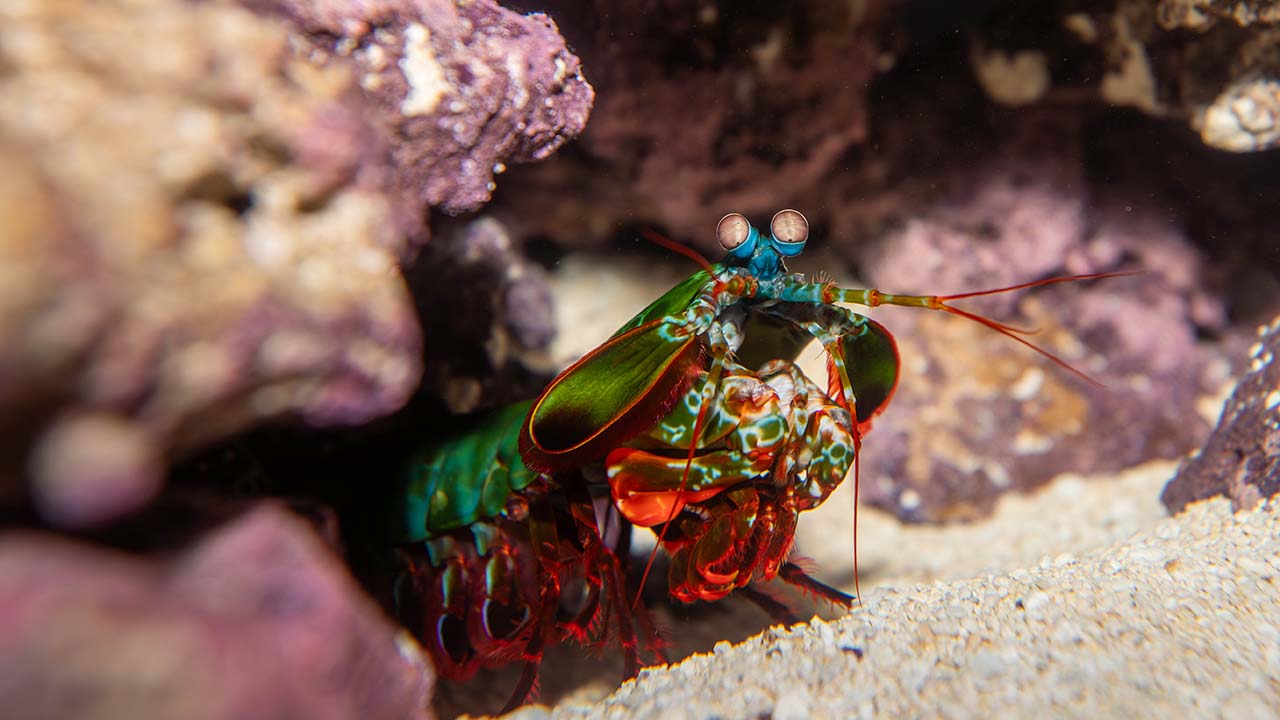
Mantis shrimp
Though they’re called “shrimp,” mantis shrimp like Scylla—who you can see in our Healthy Corals, Healthy Reefs exhibit—aren’t really shrimp at all! They’re carnivorous crustaceans from the order Stomatopoda, which is made up of more than 500 extant species of mantis shrimp.
Mantis shrimp are probably best known for their unique and powerful punching abilities. Using their club-like front appendages, they can “punch” their prey at speeds of up to 50 mph, stunning their opponent in a burst of bubbles.
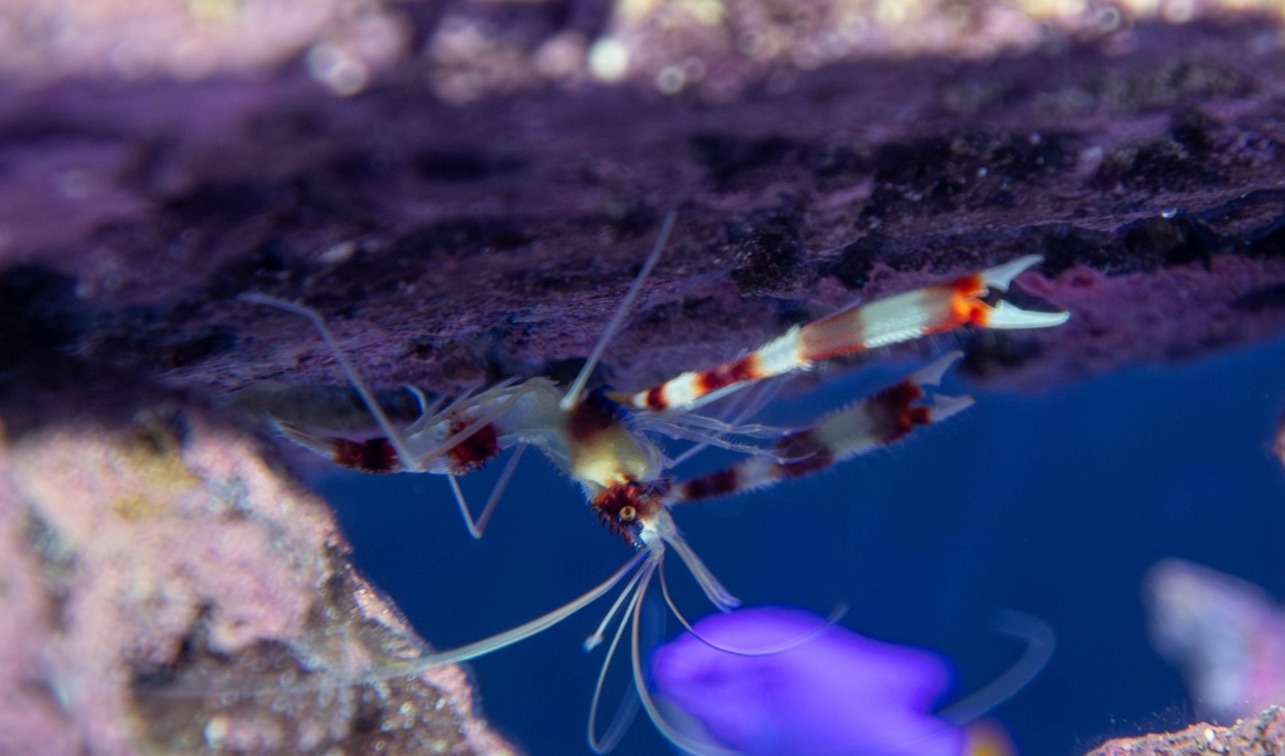
Coral-banded shrimp
The candy-cane colored coral banded shrimp are part of the family of “boxing shrimp,” after the large pinchers on their third legs. But—you guessed it—they’re not true shrimp, and instead are in their own group, Stenopodidea.
Often spotted perched upside-down in rocky crevices, these shrimp have a unique role on the reef. They’re nature’s cleaners, removing parasites, fungi, and dead tissue from fish and the coral reefs they call home. Catch them “hanging out” in our Healthy Corals, Healthy Reefs exhibit!
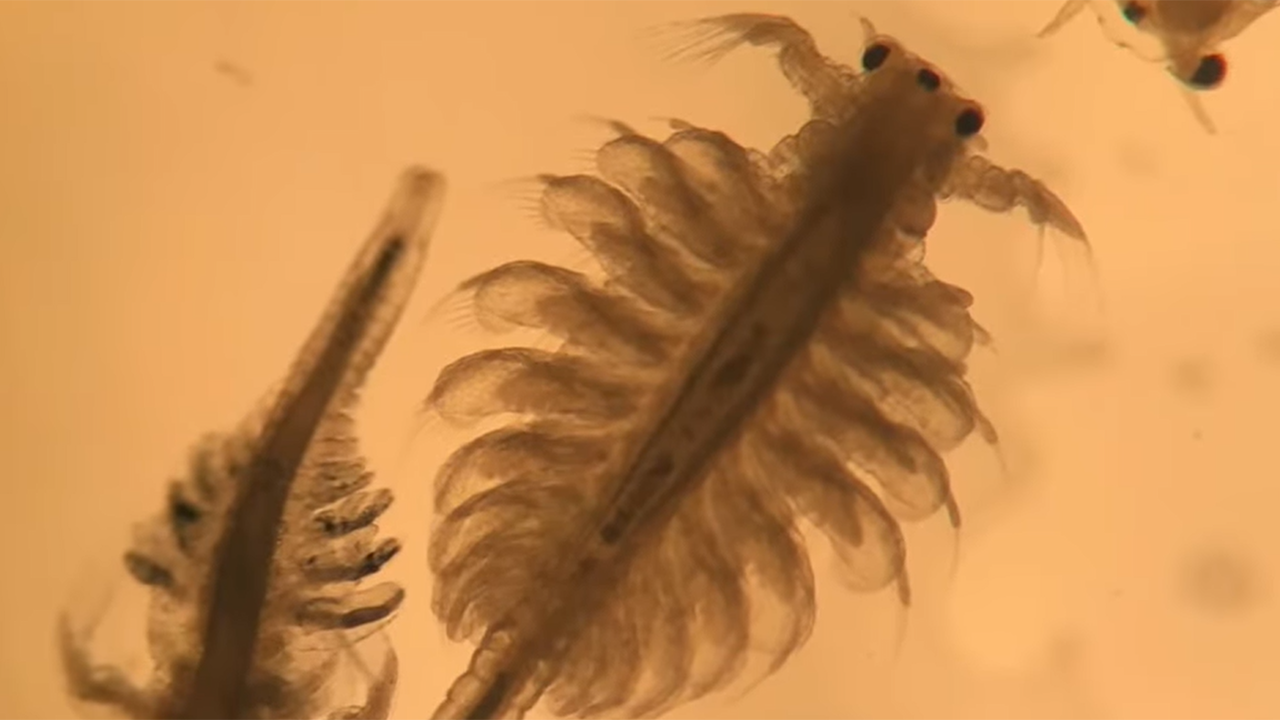
Mysid and brine shrimp
Mysid shrimp and brine shrimp are two different species of tiny crustaceans. You may even know brine shrimp by their other name: Sea-Monkeys!
While you can’t see mysid shrimp at the Aquarium, you can check out brine shrimp in our Live Foods exhibit in the Blue Planet Action Center. Both species play a critical role in the care of many of our animals! We culture mysid and brine shrimp as part of our work to provide a sustainable source of live foods. Our sea jellies and filter-feeders, such as tube worms and scallops, eat baby brine shrimp; animals, including our weedy seadragons and seahorses, eat live, wild-caught mysid shrimp.
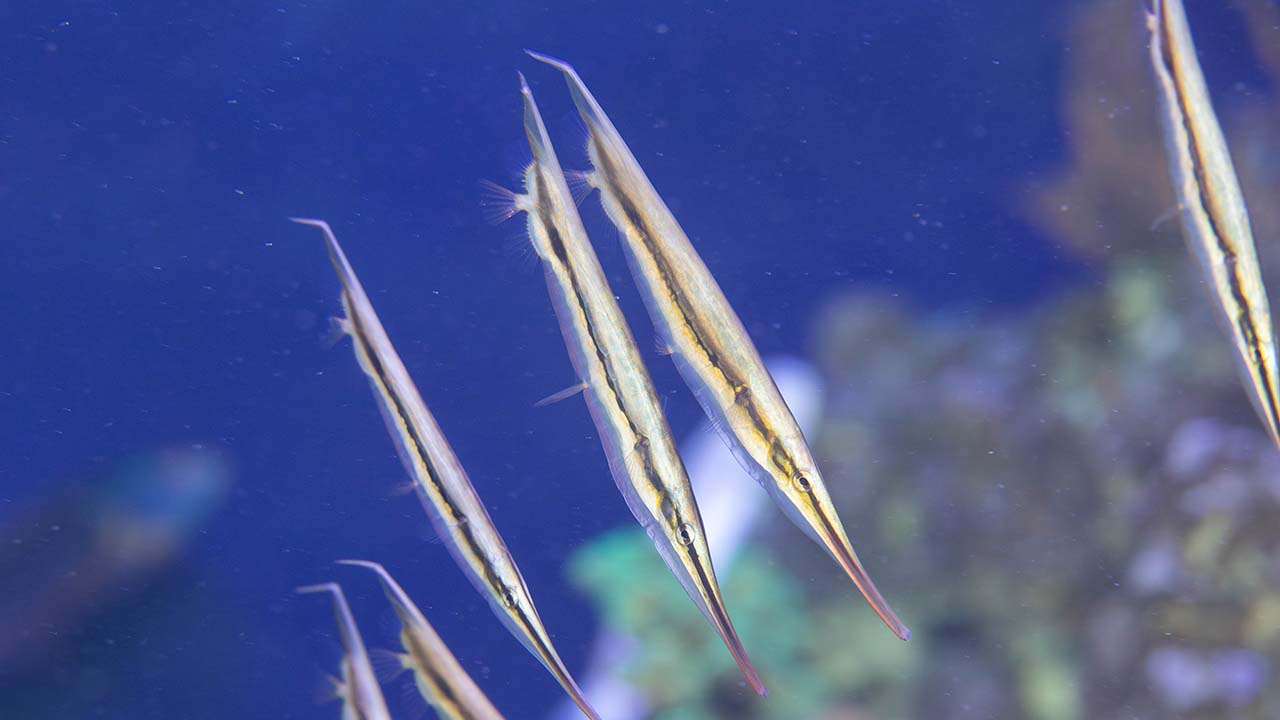
Shrimpfish
It’s probably easy to tell that the shrimpfish is more fish than shrimp, though their slender snouts and striped sides lend them a shrimp-like appearance. In the wild, shrimpfish live in reefs and seagrasses, often seen floating vertically with their head toward the ocean bottom. This helps them blend in with their surroundings; you can sometimes see them hiding amongst spiny sea urchins!
Shrimpfish are a recent addition to our Healthy Corals, Healthy Reefs exhibit. “They’ve started to form two groups: one that will float around the reef and another that hangs out closer to the rock habitat,” said Adi, an aquarist here who works in our galleries. “They’re very inquisitive and they’ll follow a diver around!”
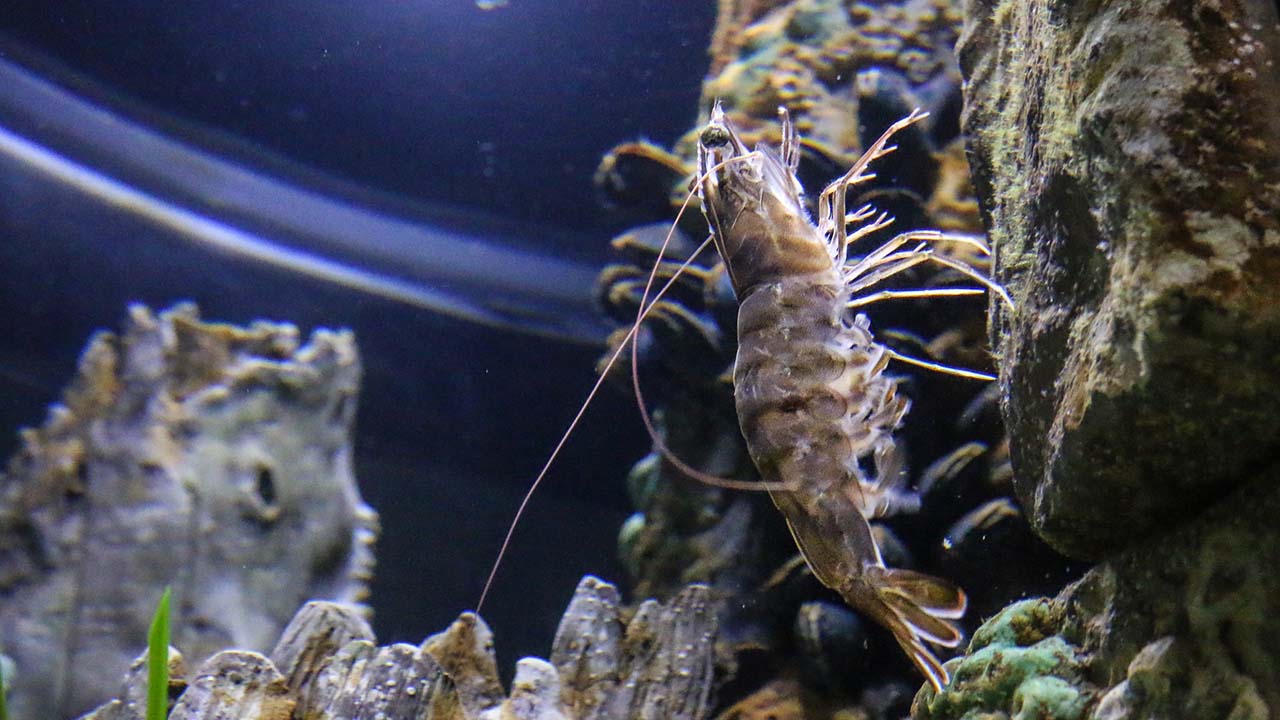
White shrimp
White shrimp are one of the larger shrimp you can see at the Aquarium—but they’re actually a type of prawn in the Dendrobranchiata suborder of decapods.
You can spot white shrimp in our seahorse and sea dragon exhibits, where they’ve made a home after arriving as something of a stowaway. When we receive live-caught mysid shrimp, which are very small and caught with a dipnet, other types of juvenile crustaceans occasionally end up as bycatch. These white shrimp came in with our wild live mysid shrimp and have now grown to adult size and are doing well under the care of our aquarists. They also give back to their seahorse neighbors, helping to keep the exhibit clean.
White shrimp have also been commercially fished off the coast of Florida for the last century and were the first shrimp to be commercially fished in the Gulf of Mexico! “Because of this, the fishery has been studied since the 1930s, and management efforts focus on preventing overfishing,” said Michelle Cho, the director of BalanceBlue Lab, who helps manage sustainable aquaculture work in our Anderson Cabot Center for Ocean Life.
Think you can spot a shrimposter? Visit the Aquarium to learn more about these animals and the ocean they call home.

